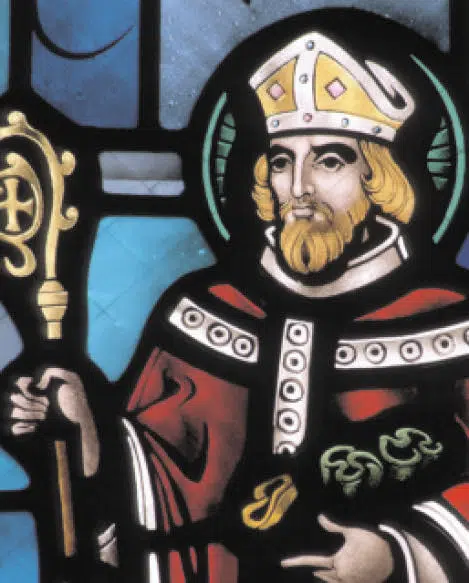St. Nicholas (died c.350)
Feast day: Dec. 6
An entire book could be devoted just to the patrons of children. More saints have been assigned to watch over infants, little boys and girls, and adolescents than any other group, perhaps because they are the most vulnerable members of the human family.
The saint with the longest history as patron of children is St. Nicholas, the 4th-century bishop of Myra and one of the most popular saints of all time. The number of churches, chapels, religious institutions, and altars dedicated to him throughout the Christian world defy counting. His cult is still strong in the Eastern Rites of the Catholic Church and in the Orthodox Church, but in the West St. Nicholas has suffered a set-back.
Since the mid-19th century, particularly in the United States, St. Nicholas has been tangled up with Santa Claus; as a result, devotion to Nicholas has diminished. It’s hard to pray seriously to someone described as “a right jolly old elf.” It would take too long to explain how St. Nicholas came to be associated with Santa, but interested readers will find the story laid out in two fine books, Charles W. Jones’ Saint Nicholas of Myra, Bari, and Manhattan: Biography of Legend, and Stephen Nissenbaum’s The Battle for Christmas.
Nicholas was born to a Christian family in Patara in what is now Turkey. He became a priest and eventually was named bishop of Myra. Although his name does not appear on the oldest lists of bishops who attended the Council of Nicaea, a strong tradition among the Greeks insists he was there and even slapped Arius across the face when the heretic was bold enough to assert that God the Son is less than God the Father.
Nicholas’ patronage of children comes from an ancient legend that tells how he raised from the dead three little boys who had been murdered by an innkeeper. The most popular story about St. Nicholas, one that is still well-known, tells of his compassion for three poor young women. Their father had lost his fortune and with it all hope of providing dowries for his daughters. To save them from their poverty and the threat of having to support themselves as prostitutes, Nicholas threw bags of gold coins through an open window of the poor family’s house so that each daughter would have enough to make a good marriage.
In the 11th century, the Seljuk Turks began encroaching on the territory of the Byzantine Empire. By 1084, Myra, the site of the tomb of St. Nicholas, was in Muslim hands. Although the Turks had not defiled the shrine, many Christians in the West thought it scandalous that the relics of St. Nicholas should be in enemy hands. The Venetians planned to rescue the saint, but in 1087 merchants from Bari in southern Italy got there first. Today the relics of St. Nicholas lie in the crypt of the grand Romanesque basilica the people of Bari built for the saint, and pilgrims – both Catholic and Orthodox – continue to visit the shrine.
To celebrate the patron saint of children, it is the custom among the Austrians, Germans, Swiss, Belgians and Dutch to give small gifts and candy to children on St. Nicholas’ Day, making the feast a sweet prelude to Christmas.
Craughwell is the author of Saints Behaving Badly and This Saint Will Change Your Life.



